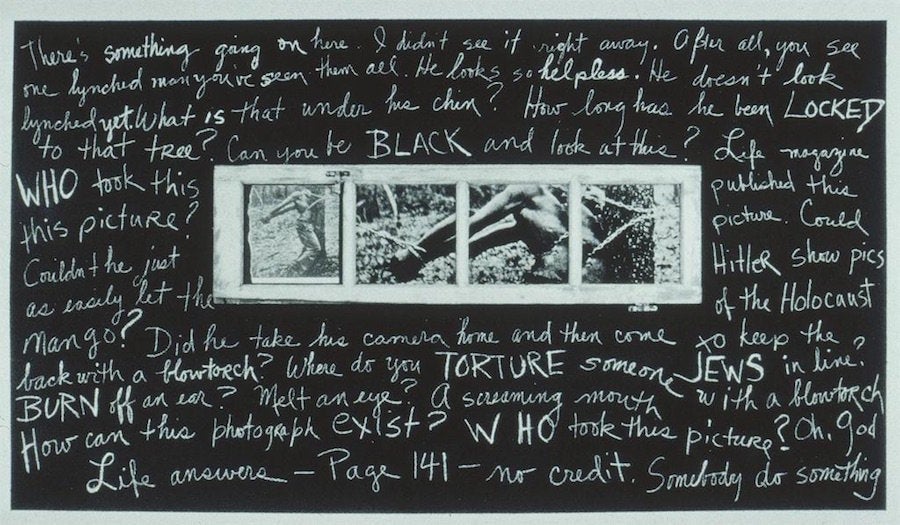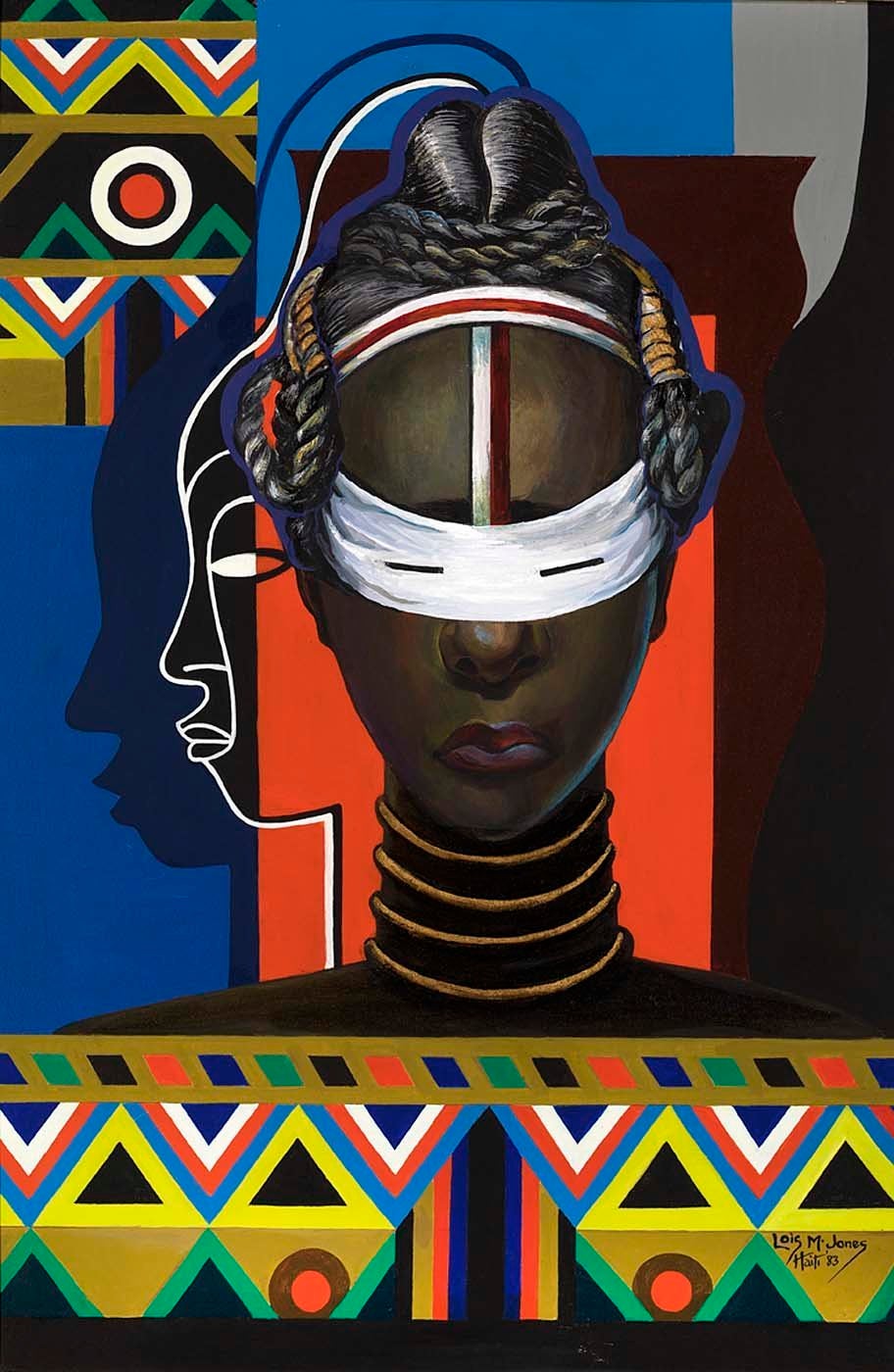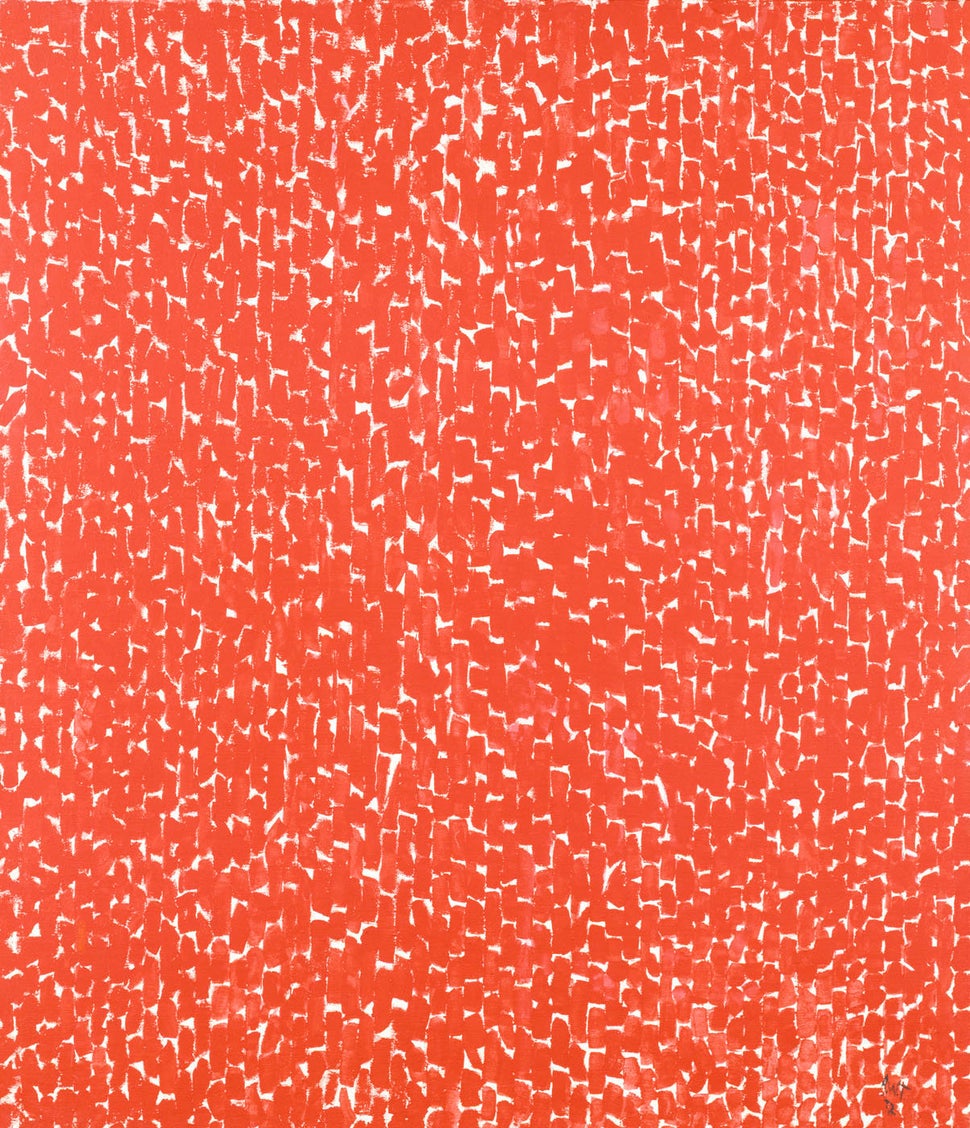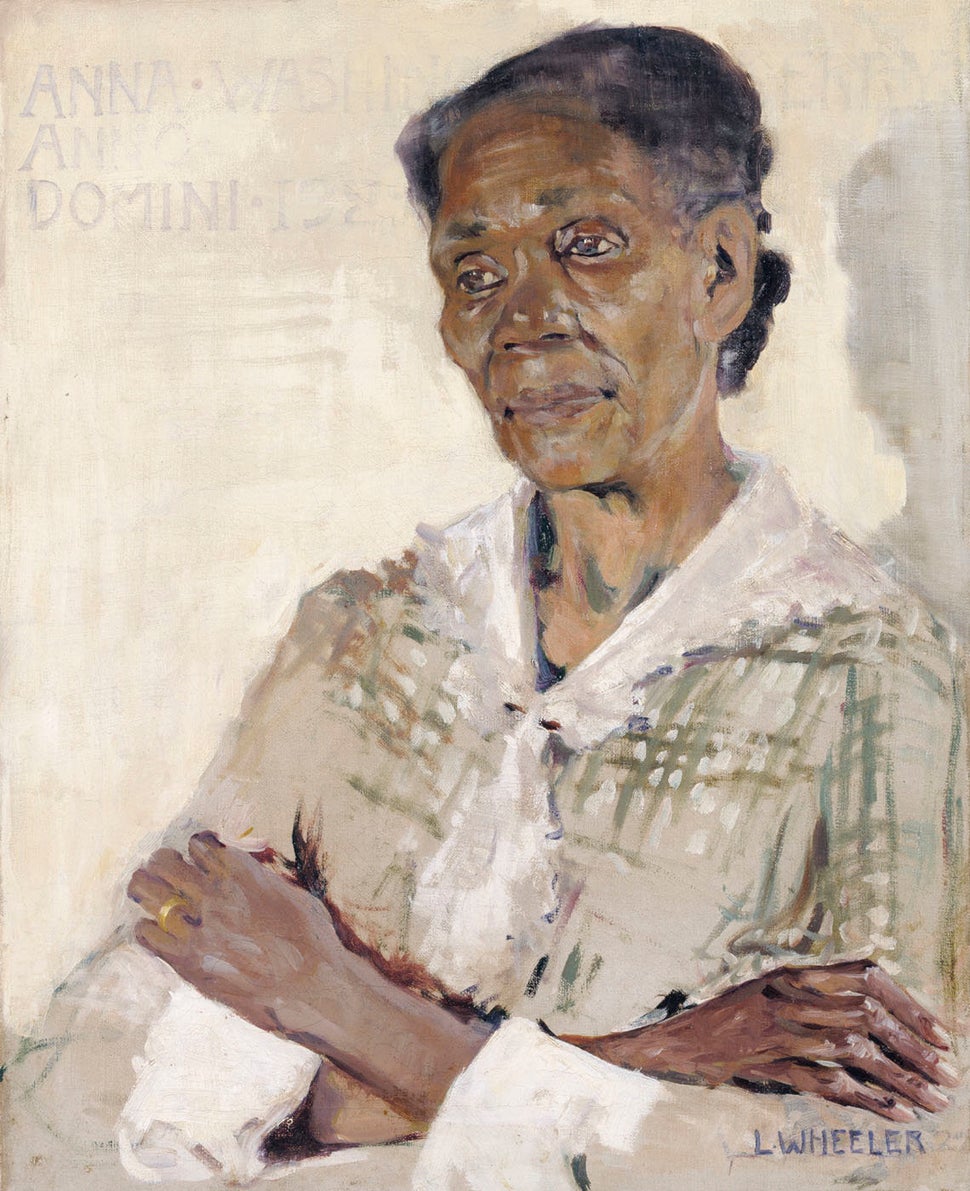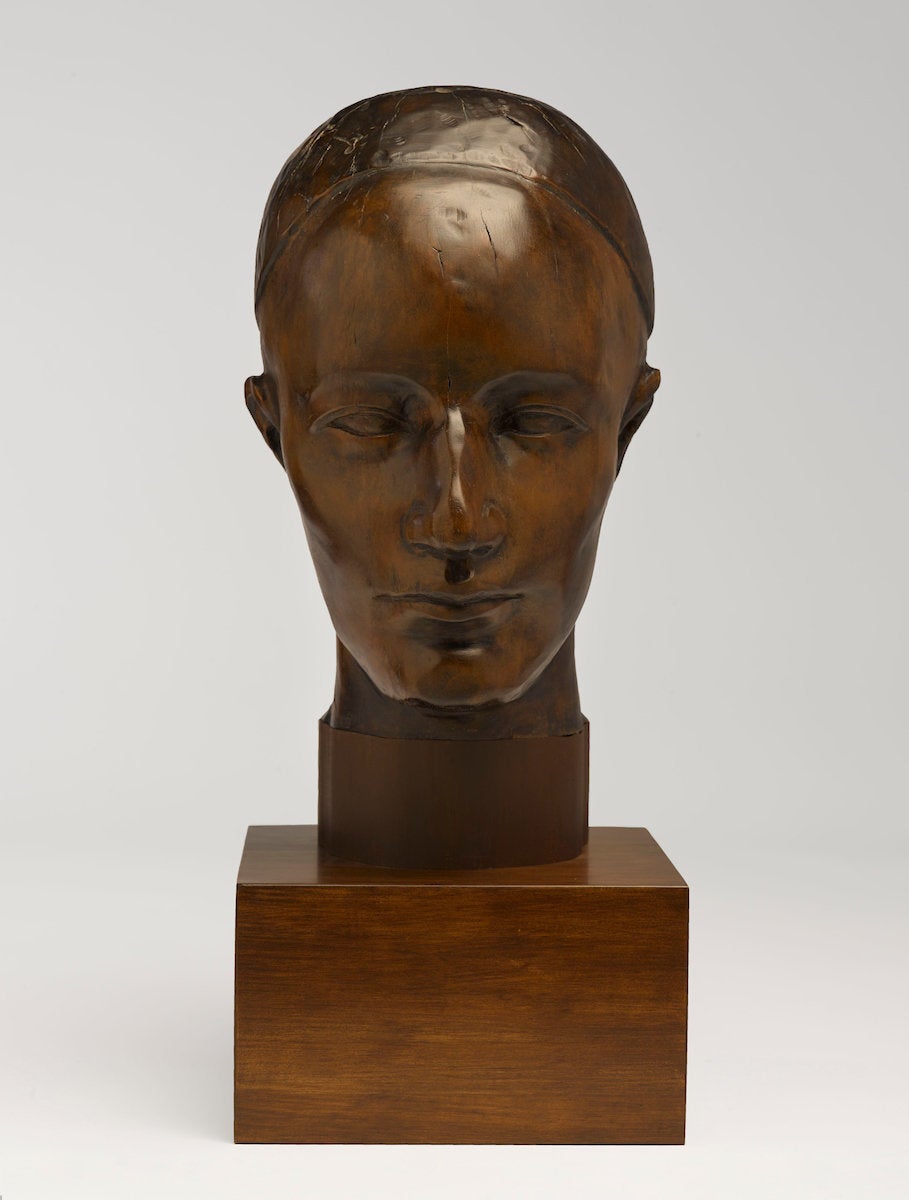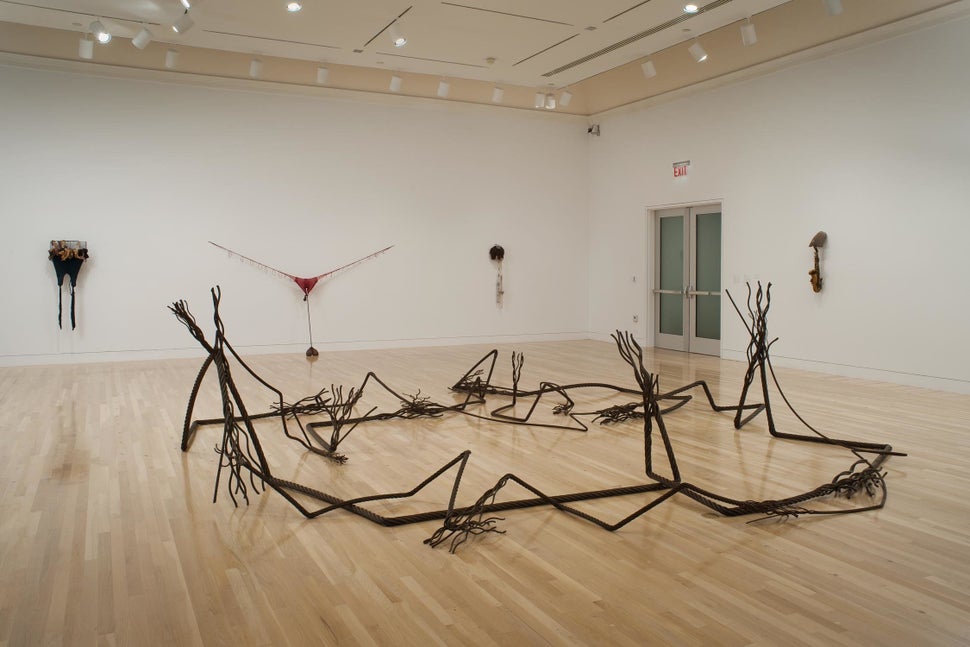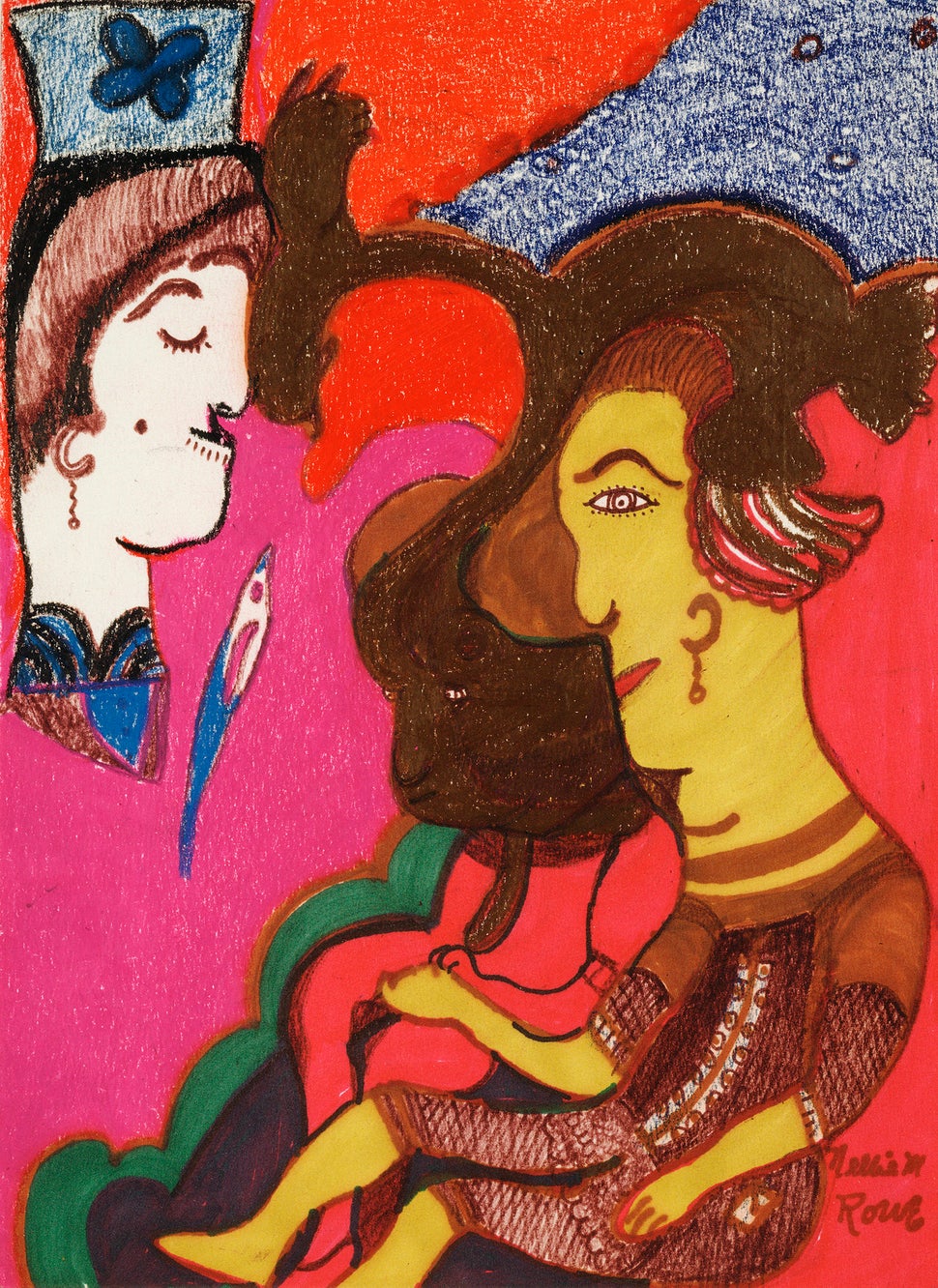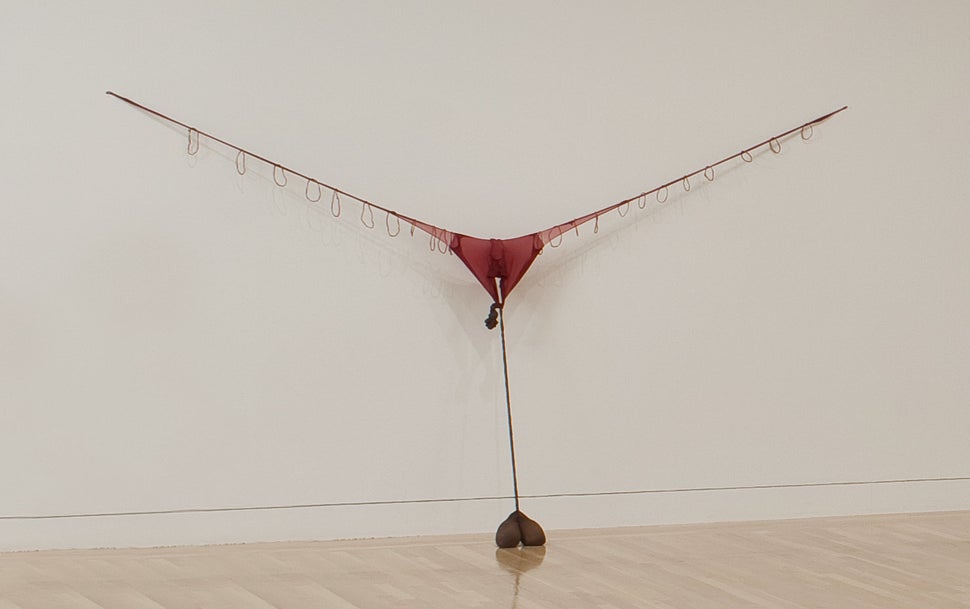Museums Celebrate The Black Women Artists History Has Overlooked
See their work. Know their names. Learn their stories.
National Museum of Women in the Arts, Gift of the artist; c. Lois Jones Mailou
On the first day of Black History Month, the good people at Google blessed the internet with a doodle honoring Edmonia Lewis, the first woman of African-American and Native American descent to earn global recognition as a fine arts sculptor.
Lewis, who grew up while slavery was still legal in the United States, became known for her hand-carved, marble sculptures of influential abolitionists and mythological figures. In part because Lewis made all of her sculptures by hand, few originals or duplicates remain intact today. She died in relative obscurity in 1907, and, to this day, remains lesser known than many of her white, male contemporaries.
This well-deserved tribute to Lewis got us thinking about the other black women artists whose contributions to the history of art have been similarly overlooked or undervalued. So we reached out to museums across the country, asking which artists past and present deserve our attention, too. Below are nine of those artists:
1. Pat Ward Williams (b. 1948)
Whitney Museum of American Art / Purchased with funds from The Audrey Sydney Irmas Charitable Foundation
Pat Ward Williams is a Los Angeles-based contemporary photographer whose work explores the personal and political lives of African-Americans. Initially, the artist set out to disrupt the homogenous way black life was captured on camera. “We always looked so pitiful, like victims,” she told the LA Times. “I knew I was a happy person. There were aspects of the black community that weren’t being shown.”
Attempting to break past photography’s tendency to linger on surfaces, Williams incorporates other media and methodology into her process, yielding mixed media collages that collapse past and present, history and imagination.
Her most famed work, featured above, features a photo of a bound black man chained to a tree, pulled from a 1937 issue of Life magazine. “Who took this picture?” Williams writes in the margins of the photo. “How can this photograph exist?”
Jamillah James, a curator at the Institute of Contemporary Art, Los Angeles, wrote to The Huffington Post: “Pat Ward Williams’ prescient, complex meditations on race, history, and representation, such as her landmark “Accused/Blowtorch/
Shared courtesy of the Institute of Contemporary Art, Los Angeles.
2. Loïs Mailou Jones (1905–1998)
Smithsonian American Art Museum
Loïs Mailou Jones was a Boston-born painter whose plentiful, 70-year art career spanned North America, Europe and Africa. Her eclectic style shifted over time, taking inspiration from African masks, French impressionist landscapes and bright Haitian patterns. An active member of the Harlem Renaissance, she used vibrant visuals to heighten the urgency of her politically charged works, which addressed the joys and challenges of black life.
“Mine is a quiet exploration,” the artist famously said, “a quest for new meanings in color, texture and design. Even though I sometimes portray scenes of poor and struggling people, it is a great joy to paint.”
Throughout her career, Jones experienced discrimination as a black artist. For example, when she first began showing her artwork, she reportedly asked white friends to deliver her works to exhibitions in an effort to hide her black identity. She did so with reason ― according to The New York Times, she’d had an award rescinded when the granter learned she was black.
After teaching at an African-American art school in segregated North Carolina, Jones eventually took a position at Howard University in Washington, D.C., where she taught for 47 years. Upon retiring, she continued to paint and exhibit her work until she died at 93 years old. Despite not being a household name to some, her art lives on in esteemed institutions like the National Museum of American Art, the Metropolitan Museum of Art and the Museum of Fine Art in Boston.
Shared courtesy of the Smithsonian American Art Museum and the National Museum of Women in the Arts.
3. Alma Thomas (1891–1978)
Smithsonian American Art Museum / Bequest of the artist
Alma Thomas, born in Columbus, Georgia, moved to Washington, D.C., with her family as a child to avoid the racial violence in the American South. Interested in art from a young age, Thomas was the first student to graduate from Howard University with a degree in fine art. There, she studied under Loïs Mailou Jones while adopting an aesthetic of her own.
Thomas’ style pulls elements from Abstract Expressionism and the Washington Color School, drawing from the splendor of nature to create nonrepresentational canvases that sing with soft vitality. Famously, Thomas was most inspired by her garden and would watch with fascination as the scenery changed around her.
“I got some watercolors and some crayons, and I began dabbling,” she said. “Little dabs of color that spread out very free ... that’s how it all began. And every morning since then, the wind has given me new colors through the windowpanes.”
Jones taught at a junior high school for most of her life, making work on the side. She had her first exhibition at 75 years old, later becoming the first woman to have a solo exhibition at The Whitney.
Shared courtesy of the Smithsonian American Art Museum.
4. Laura Wheeler Waring (1877–1948)
Smithsonian American Art Museum/ Gift of the Harmon Foundation
Laura Wheeler Waring, raised by a pastor and teacher in Hartford, Connecticut, was interested in art as a child. In 1914, she travelled to Europe, where she studied the old masters at the Louvre and specifically the works of Claude Monet. When she returned to the United States, due to the encroachment of World War I, Waring went on to teach and lead the departments of art and music at the Cheyney Training School for Teachers.
Although Waring worked in landscapes and still lifes, she is most celebrated for her paintings, which depicted accomplished black Americans with dignity and strength. Her most well-known series is the 1944 “Portraits of Outstanding American Citizens of Negro Origin,” which featured depictions of individuals including W.E.B. Du Bois, Marian Anderson and James Weldon Johnson.
During the Harlem Renaissance, Waring also contributed pen and ink to the NAACP magazine The Crisis, working alongside activists to address probing political issues. An exhibition of Waring’s work showed a year after her death at the Howard University Gallery of Art.
Shared courtesy of the Brooklyn Museum and Smithsonian American Art Museum.
5. Barbara Chase-Riboud (b. 1939)
The Studio Museum in Harlem / Gift of the Lannan Foundation
Born in Philadelphia, Barbara Chase-Riboud began taking art classes at a young age. As a student at Temple University’s Tyler School of Art, she sold a woodcut to the Museum of Modern Art in New York City. By the time she graduated from Yale with an MFA, she had a sculpture on view at the Carnegie Mellon Institute.
The artist is known for her larger-than-life sculptures made from cast metal and shrouded in skeins of silk and wool, the strange lovechildren of a suit of armor and a ballgown skirt. At once strong and fluid and feminine and mechanical and natural, the stunning works became a symbols for feminine strength, as well as a visual manifestation of transformation and integration.
“I love silk, and it’s one of the strongest materials in the world and lasts as long as the bronze,” the artist said. “It’s not a weak material vs. a strong material [...] the transformation that happens in the steles is not between two unequal things but two equal things that interact and transform each other.”
Chase-Riboud, who currently lives between Paris and Rome, is also an award-winning poet and novelist, known for her 1979 historical novel Sally Hemings, about the non-consensual relationship between former President Thomas Jefferson and his slave Sally Hemings.
Shared courtesy of theThe Studio Museum in Harlem.
6. Nancy Elizabeth Prophet (1890–1960)
Brooklyn Museum Fund for African American Art in honor of Saundra Williams-Cornwell
Nancy Elizabeth Prophet was raised in Rhode Island by an African-American mother and a Narragansett-Pequod father. She attended the prestigious Rhode Island School of Design where she studied painting and drawing, notably portraiture, and worked as a housekeeper to pay tuition. She graduated amidst the burgeoning Harlem Renaissance.
In 1922, Prophet moved to Paris, in part frustrated by the racism rampant in the American art scene. Despite being broke and exhausted, she was creatively invigorated by the change of scenery and began creating sculptural portraits from materials including wood, marble, bronze, plaster and clay. Of the works, art historian James Porter wrote (quoted in Notable Black American Women): ”The pride of race that this sculptor feels resolves itself into an intimation of noble conflict marking the features of each carved head.”
Despite the fact that her sculptures were exhibited at high-society salons, Prophet herself remained impoverished abroad, eventually forcing her to move back to the States. There she continued to submit her sculptures to galleries and competitions, while also teaching art at both Atlanta University and Spelman College. (She was rumored to bring a live rooster to class for her students to sketch.)
Eventually, Prophet moved back to Rhode Island ― in part, again, to escape segregation ― at which point her career slowed down dramatically. Although few of her sculptures are accounted for today, one is housed in the permanent collection of The Whitney in New York City.
Shared courtesy of the Brooklyn Museum.
7. Maren Hassinger (b. 1947)
Hammer Museum, Los Angeles / Gift of the artist
Born and raised in Los Angeles, Maren Hassinger began dancing at the age of 5. She intended to continue studying dance as a student at Bennington College, but ended up switching to sculpture. In 1973, she graduated from UCLA with a master’s degree in fiber art.
In her work, Hassinger combines elements of sculpture, performance, video and dance to investigate the relationship between the natural and industrial worlds. Her commonly used materials include wire, rope, garbage, leaves, cardboard boxes and old newspapers, often arranged to encourage movement, as if the sculptures themselves are engaged in a dance.
Hassinger’s work explores personal, political and environmental questions in an abstract language that allows viewers to come to their own conclusions. “All the pieces with boxes are about our gross need to consume, and where it leads us,” she once told BOMB. “Where is the bleeding heart in all of this? I don’t think my work has so much to do with ecology, but focuses on elements, or even problems we all share, and in which we all have a stake.”
Since 1997, Hassinger has served as the director of the Rinehart School of Sculpture at Maryland Institute College of Art in Baltimore.
Shared courtesy of the Hammer Museum.
8. Nellie Mae Rowe (1900–1982)
Gift of Judith Alexander / Photo by Gavin Ashworth
Nellie Mae Rowe was born in rural Georgia, one of nine daughters. Her father, a former slave, worked as a blacksmith and basket weaver; her mother made quilts and clothes. She married at 16 and, when her husband passed away, married another widower at 36. When he died, Rowe was 48 years old and began a new life as an independent woman and an artist.
Rowe referred to her blossoming interest in art as a chance to re-experience childhood. She began to adorn the exterior of her house, which called the “playhouse,” with stuffed animals, life-sized dolls, animal-shaped hedges and sculptures made of chewing gum.
Along with her installations, Rowe created vibrant and flat drawings from humble materials like crayon, cardboard and felt-tip markers. Her images normally consisted of humans and animals swallowed by colorful, abstract designs and often referenced personal struggles in her own life. When she was diagnosed with cancer in 1981, Rowe channeled her emotions into her work, grappling with her changing body and attitudes towards death through bold, symbolic imagery.
“I feel great being an artist,” Rowe famously said. “I didn’t even know that I would ever become one. It is just surprising to me.”
Shared courtesy of the American Folk Art Museum.
9. Senga Nengudi (b. 1943)
Hammer Museum / Photo by Robert Wedemeyer
Senga Nengudi was born in Chicago, Illinois, and moved to Los Angeles, California, soon after. She studied art and dance at California State University, where she received her BA and MFA. In between degrees, she spent a year studying in Tokyo, where she was inspired by Japanese minimalist tradition as well as the Guttai performance art groups.
In the 1960s and ‘70s, Nengudi was an elemental force in New York’s and Los Angeles’ radical, avant-garde black art scenes, though her acclaim never quite spread to the mainstream. Along with artists David Hammons and Maren Hassinger, she formed Studio Z, an artist collective that shared a love for abandoned materials and overlooked spaces. The collective often wore costumes and carried instruments to improvise performances at unlikely locales like freeway underpasses or abandoned schools.
Nengudi’s most iconic sculptural performance project, called “R.S.V.P.,” featured pantyhose as a central material. Exploring the everyday object’s relationship to skin, constriction, elasticity and femininity, Nengudi stretched and warped the sheer undergarments so they resembled sagging body parts and abstract diagrams. She’d often recruit collaborator Hassinger to activate the sculptures by dancing through them, privileging improvisation as the mode of ritual.
“When we were kicked off the boat, improvisation was the survival tool: to act in the moment, to figure something out that hadn’t been done before; to live,” Nengudi told Hyperallergic. “And the tradition goes through Jazz. Jazz is the perfect manifestation of constant improvisation. It has to be in place at all times. Constant adjustment in a hostile environment, you have to figure something out right away.”
Shared courtesy of the Hammer Museum.
CLARIFICATION: This article has been updated to reiterate that the relationship between Thomas Jefferson and Sally Hemings was non-consensual.

